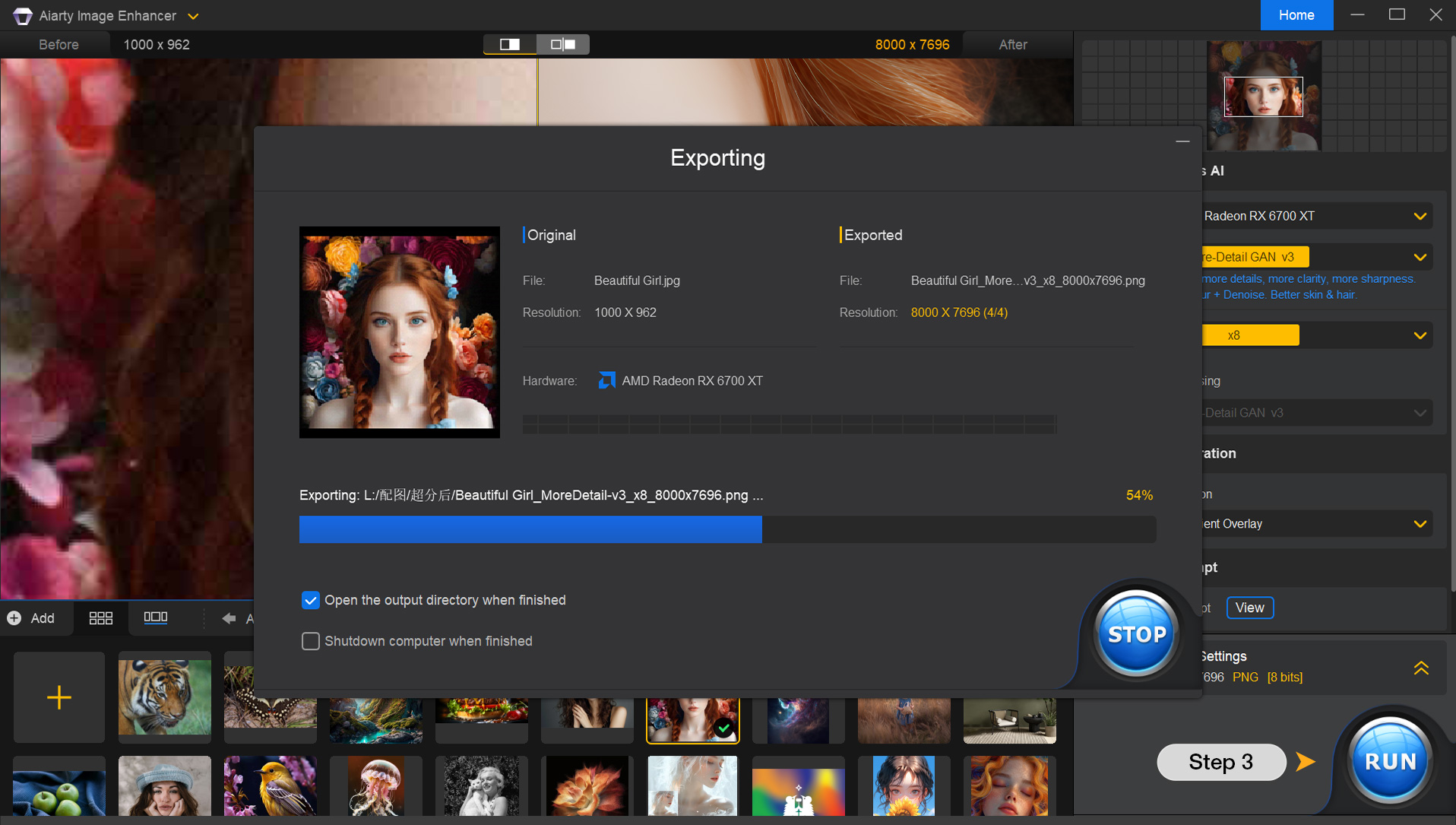
Aiarty Image Enhancer: Complete Buyer's Guide
Democratizing professional image enhancement for cost-conscious design teams
Aiarty Image Enhancer positions itself as the accessible AI denoising solution that democratizes professional image enhancement for cost-conscious design teams and individual professionals.
Market Position & Maturity
Market Standing
Aiarty Image Enhancer occupies a strategic mid-market accessibility position within the AI denoising landscape, successfully addressing SME adoption barriers through pricing innovation and usability optimization while maintaining clear boundaries around enterprise functionality[141][147][152].
Company Maturity
Company maturity indicators suggest focused product development with specialized AI model training on millions of images, demonstrating technical investment and algorithmic sophistication[142][150].
Industry Recognition
Industry recognition remains limited compared to established vendors, with customer evidence serving as primary validation rather than analyst recognition or industry awards.
Longevity Assessment
Long-term viability assessment depends on continued focus on SME market requirements and resistance to feature creep that could compromise cost positioning.
Proof of Capabilities
Customer Evidence
Customer implementation evidence demonstrates measurable outcomes across diverse use cases. An architectural firm successfully processed 12,000 legacy project photos using Aiarty's batch processing capabilities, proving scalability for large archive restoration projects that would be cost-prohibitive with subscription-based alternatives[150].
Quantified Outcomes
Quantified performance metrics reveal competitive advantages in specific scenarios. Comparative testing demonstrates favorable detail retention (4.5/5) versus Topaz DeNoise AI (3.8/5) in controlled conditions, with batch processing capacity of 3,000 images significantly exceeding Topaz's 500-image limitation[146].
Market Validation
Market validation indicators include positive user ratings for detail retention capabilities and documented success in AI-generated content optimization through the specialized AIGCsmooth model[142][149].
Competitive Wins
Competitive performance evidence shows 60% lower total ownership costs than subscription alternatives over multi-year periods, with the $99 lifetime license providing significant value compared to Topaz DeNoise AI's $795 five-year cost and DxO PureRAW 5's $995 equivalent[140][141].
AI Technology
Aiarty Image Enhancer's technical foundation centers on four specialized AI models trained for distinct enhancement scenarios, representing a targeted approach to image processing rather than universal algorithmic solutions.
Architecture
Architecture deployment utilizes DirectML acceleration requiring DirectX 12.0+ GPUs, with TensorRT optimization for NVIDIA GTX 1050+ hardware to achieve optimal performance[152].
Primary Competitors
Primary competitive landscape positions Aiarty against Topaz DeNoise AI, DxO PureRAW 5, and NVIDIA OptiX across different market segments and use case requirements.
Competitive Advantages
Competitive advantages center on accessibility and batch processing efficiency. Processing capacity of 3,000 images significantly exceeds Topaz's 500-image limitation, while $99 lifetime licensing removes budget barriers affecting SME adoption[146][141].
Market Positioning
Market positioning analysis places Aiarty in the mid-market accessibility segment rather than premium performance tier. The vendor successfully addresses SME adoption barriers through pricing and usability but cannot compete with enterprise solutions on integration capabilities or advanced features[141][147][152].
Win/Loss Scenarios
Win/loss scenarios reveal clear decision points. Organizations prioritizing cost efficiency, batch processing volume, and simplified workflows should evaluate Aiarty as primary consideration[141][146][149].
Key Features

Pros & Cons
Use Cases
Pricing
Featured In Articles
Comprehensive analysis of AI Image Denoisers for AI Design for AI Design professionals. Expert evaluation of features, pricing, and implementation.
How We Researched This Guide
About This Guide: This comprehensive analysis is based on extensive competitive intelligence and real-world implementation data from leading AI vendors. StayModern updates this guide quarterly to reflect market developments and vendor performance changes.
152+ verified sources per analysis including official documentation, customer reviews, analyst reports, and industry publications.
- • Vendor documentation & whitepapers
- • Customer testimonials & case studies
- • Third-party analyst assessments
- • Industry benchmarking reports
Standardized assessment framework across 8 key dimensions for objective comparison.
- • Technology capabilities & architecture
- • Market position & customer evidence
- • Implementation experience & support
- • Pricing value & competitive position
Research is refreshed every 90 days to capture market changes and new vendor capabilities.
- • New product releases & features
- • Market positioning changes
- • Customer feedback integration
- • Competitive landscape shifts
Every claim is source-linked with direct citations to original materials for verification.
- • Clickable citation links
- • Original source attribution
- • Date stamps for currency
- • Quality score validation
Analysis follows systematic research protocols with consistent evaluation frameworks.
- • Standardized assessment criteria
- • Multi-source verification process
- • Consistent evaluation methodology
- • Quality assurance protocols
Buyer-focused analysis with transparent methodology and factual accuracy commitment.
- • Objective comparative analysis
- • Transparent research methodology
- • Factual accuracy commitment
- • Continuous quality improvement
Quality Commitment: If you find any inaccuracies in our analysis on this page, please contact us at research@staymodern.ai. We're committed to maintaining the highest standards of research integrity and will investigate and correct any issues promptly.